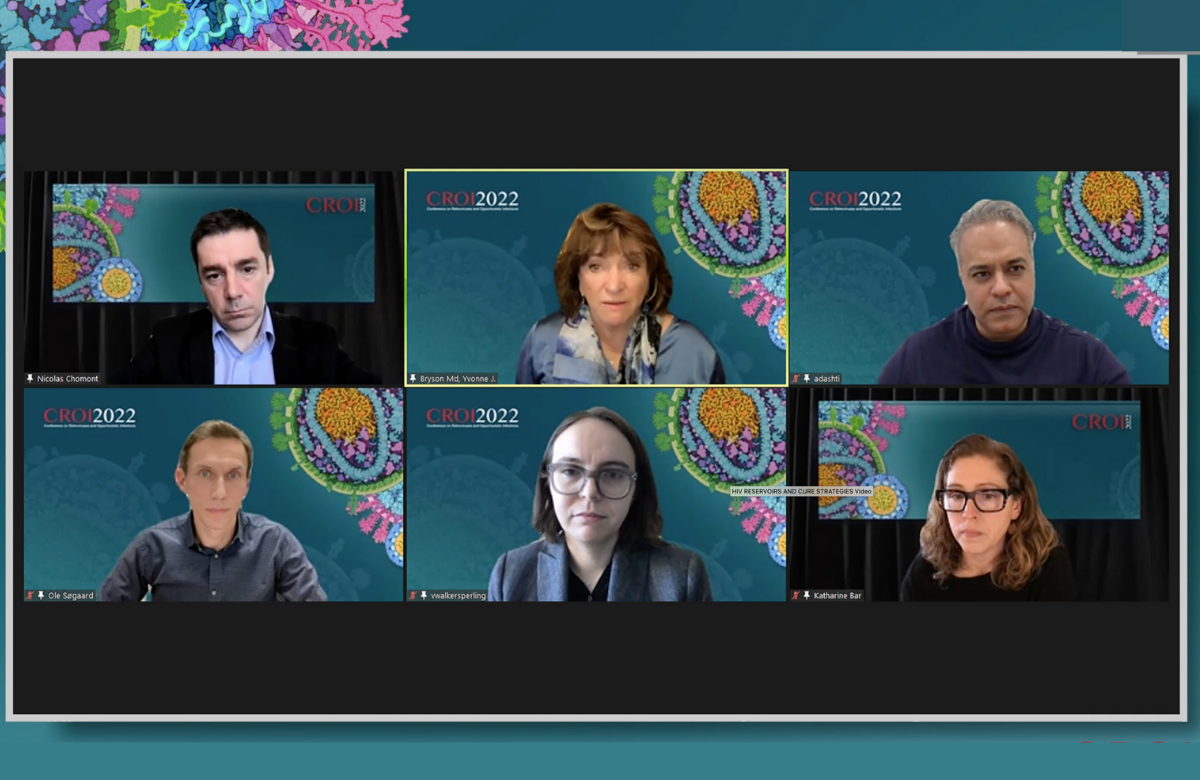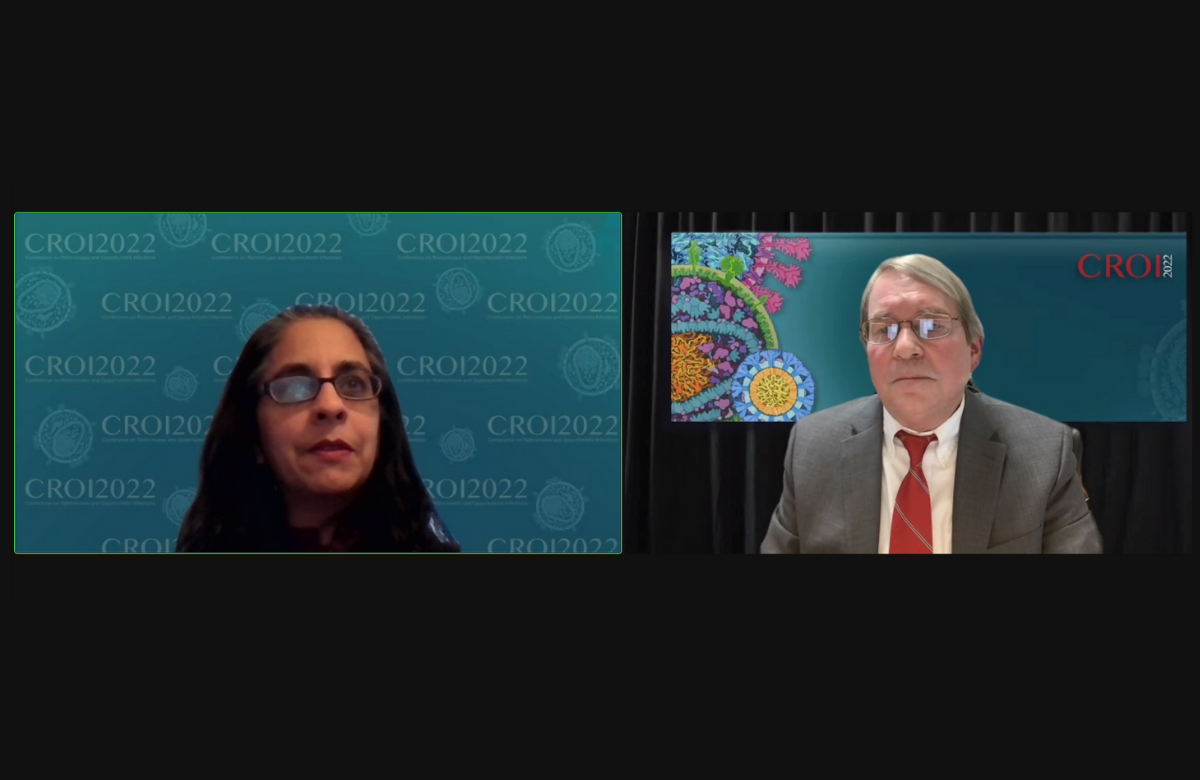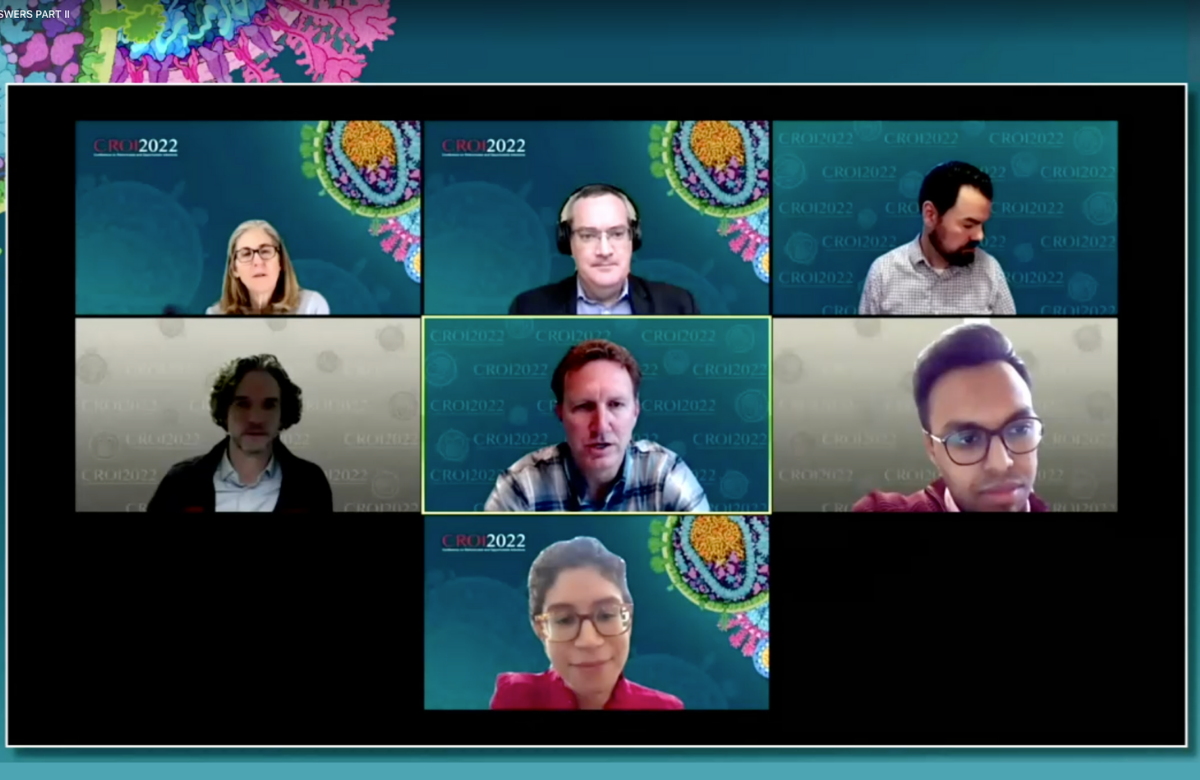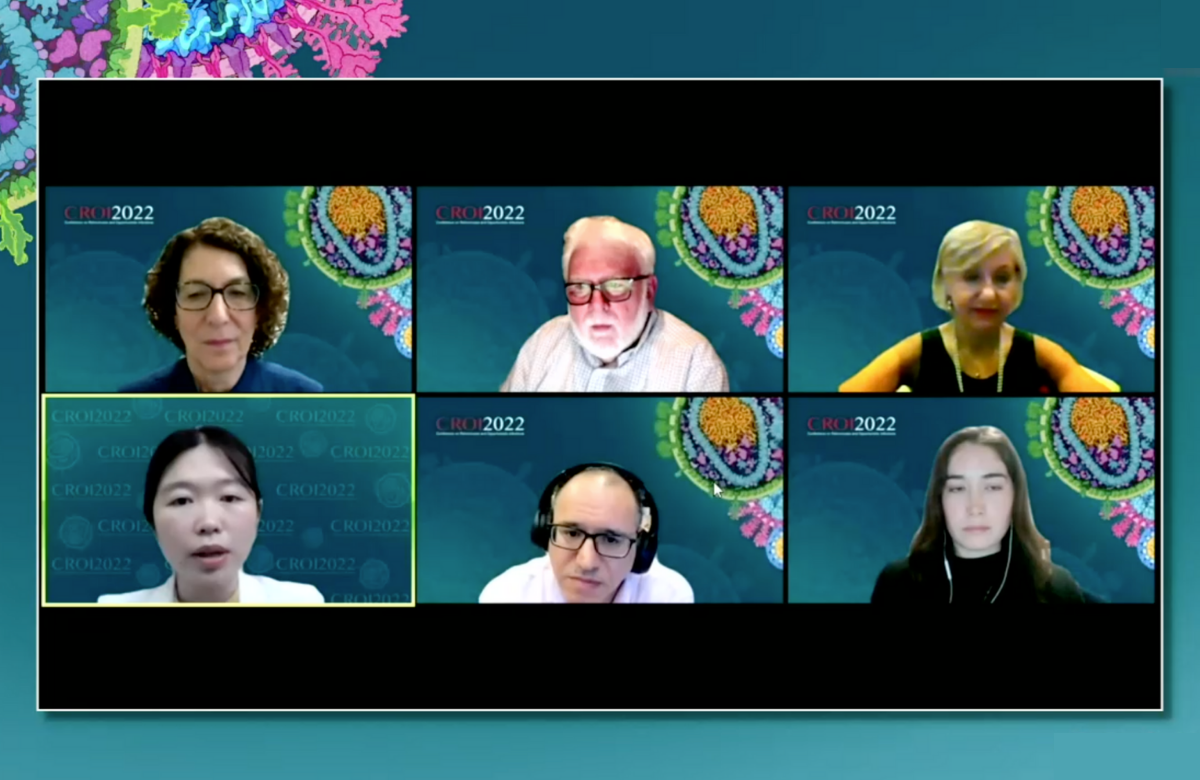New York woman free of HIV 14 months after stem cell transplant

Professor Yvonne Bryson of the University of California Los Angeles described the new case at the Conference on Retroviruses and Opportunistic Infections (CROI 2022).
The woman was diagnosed with HIV in 2013 and with acute myeloid leukaemia in 2017 and she needed a stem cell transplant. She joined a study designed to use previously screened umbilical cord blood with the double CCR5-delta-32 mutation. This rare mutation leads to an absence of CCR5 co-receptors, the gateways most types of HIV use to enter T-cells. Cells with this mutation have been used previously to rebuild an HIV-resistant immune system in people with HIV needing stem cell transplants. Being of mixed race, the woman’s chances of finding an adult donor who was both a close genetic match and carried the double mutation were slim, especially given that people of colour are underrepresented among bone marrow donors in the US.
Doctors performed a new procedure known as a haplo-cord transplant, which combined CCR5-delta-32 cord blood cells with partially matched adult donor stem cells from a relative without the mutation. Cord blood does not require such a close genetic match, but the volume of banked cells is too small for an adult transplant and cord cells are slower to become established in the body. The adult donor cells provide enough volume and faster engraftment, shoring up the immune system and giving the cord blood cells more time to get established. The woman received intensive chemotherapy and whole-body radiotherapy prior to the stem cell transplant.
The transplant went well. The woman remained on antiretroviral therapy for three years before deciding to try a closely monitored treatment interruption. Fourteen months later – four and a half years after the stem cell transplant – she has not experienced viral rebound, is HIV antibody negative and her leukaemia remains in remission.
While it is too soon to declare for certain that she is cured of HIV, experts are hopeful that the 'New York patient’ will join the 'Berlin patient' and the 'London patient' as the third person to be free of HIV over the long term after stem cell transplantation. However, they caution that this is a risky procedure that is not applicable to most people living with the virus.
Lifetime risk of HIV in the US decreases, but not for all

At every age, males had a higher lifetime risk of being diagnosed with HIV than females. The overall lifetime risk was 1 in 76 for males, while it was 1 in 309 for females.
Additionally, lifetime risk is markedly higher for some racial groups: Black males have a lifetime risk of 1 in 27, whereas for White males it is 1 in 171. Black females have a 1 in 75 risk, compared to 1 in 874 for White females. Risk also differs dramatically based on where you live in the US, from a high of 1 in 39 in Washington DC down to 1 in 655 in Wyoming.
Comparing the two time periods showed there has been no improvement in lifetime HIV risk for groups such as Latinx people, American Indians, and White females. Lifetime risk continues to be heavily patterned along sex, racial and geographic lines.
Estimates of risk may be a useful indication of where prevention efforts need to be strengthened. Singh emphasised the need to urgently attend to structural factors that predispose certain racial groups to a much higher lifetime risk than others.
Zero vertical transmissions from over 5000 pregnant women with undetectable HIV in France

If a woman with HIV is not taking treatment, HIV can be passed on to her baby during pregnancy, labour or breastfeeding. This is sometimes called ‘vertical’ transmission. The statement ‘undetectable equals untransmittable’ (U=U), meaning that HIV cannot be passed on when someone has an undetectable viral load, is based on data on sexual transmission, not vertical transmission. However, this research shows what is possible in a high-income country with uninterrupted access to health care.
Researchers looked at data from 15,959 babies born to mothers living with HIV in mainland France between 2000 and 2017. The 0% figure relates to the 5482 infants whose mothers were already taking HIV treatment when they became pregnant, had an undetectable viral load (below 50) at the time of delivery and did not breastfeed. In addition, there was a 0% transmission rate for 2358 infants whose mothers were undetectable during the first trimester of pregnancy.
The data also confirmed that transmission was frequent when the mother did not receive treatment and that the earlier treatment was started, the rarer transmission was. Over the period analysed, the proportion of women taking HIV treatment has gone up (from 68% in 2000-2005 to 99.2% in 2011-2017) and the proportion of babies born with HIV has gone down (from 1.1% in 2000-2005 to 0.2% in 2011-2017).
Heart attack rates are declining, but not in people with HIV

People living with HIV in two US cities had a 60% higher risk of myocardial infarction, or heart attack, compared with HIV-negative individuals, with a widening disparity over time, according to research presented at CROI 2022. These findings underscore the need for ongoing monitoring and interventions to manage cardiovascular disease.
Previous research showed that people living with HIV had a higher risk of cardiovascular events than HIV-negative people, but the risk could be changing as the HIV population is ageing, people are using different antiretrovirals, are less likely to have a low CD4 cell count and are more likely to have well-controlled HIV.
To explore this, researchers looked at HIV-positive and HIV-negative members of two large US health systems, covering San Francisco and Boston, in 2005-2009 and 2010-2017.
The analysis included 9401 HIV-positive adults, each matched to three or four HIV-negative individuals with similar demographic and cardiovascular risk profiles. Nearly 90% of participants were male, reflecting the HIV populations in these cities.
During the early period, the cumulative incidence of heart attack over five years was the same in the HIV-positive and HIV negative groups, at 1.1% each. But in the later period, the rates diverged, rising to 1.2% in the HIV-positive group and falling to 0.9% in the HIV-negative group. After adjusting for demographics and cardiovascular risk factors, people with HIV had a 60% greater risk of heart attack compared with the HIV-negative group.
The difference appeared to be largely driven by a reduction in risk for the HIV-negative group rather than increased risk for the HIV-positive group. The researchers suggested that HIV-specific factors such as a longer duration of infection and use of newer antiretrovirals may have prevented people with HIV from realising the same improvement seen in the HIV-negative group.
For example, integrase inhibitors have been linked to weight gain and tenofovir alafenamide is associated with elevated blood lipids, unlike the older tenofovir disoproxil fumarate.
What led to the fall in HIV cases in UK gay men?

A combination of prevention measures has led to the striking decline in new HIV infections in gay and bisexual men in the UK, according to a poster presented at CROI 2022.
There were an estimated 669 new HIV infections in gay and bisexual men in 2021. In 2011, this figure was around 3000. The researchers estimate that this 75% drop in a decade will continue if current prevention measures are maintained, leading to new cases of HIV in gay and bisexual men becoming rare by 2040.
The modelling study used ‘counterfactual’ scenarios to tease out the contribution of different measures. They found that if condom use in gay and bisexual men never rose far beyond the levels seen in 1980, the annual number of infections would be more than doubled. If the number of men testing for HIV had not increased, even though condom use, the proportion of men with HIV on treatment and PrEP use were at present levels, there would be 80% more infections.
If people still only began HIV treatment when their CD4 counts fall below 350, there would be 25% more infections. Finally, if PrEP (regular medication to prevent HIV infection) had never been introduced, then even if the other changes had been made, then there would be twice as many infections in 2021.
The modelling suggested that, had none of these interventions been introduced, there would have been 7646 new infections in 2021 – eleven times as many as occurred. The four interventions worked together and had a synergistic effect.
Booster vaccine doses protect people with HIV against severe COVID-19

Several studies have shown that people with HIV – especially those with CD4 counts below 200 – have weaker responses to some COVID vaccines. Health authorities in the US and Europe recommend that people with HIV should receive an additional vaccine dose if they are immunocompromised. This additional dose is intended to enable immune responses to vaccination to reach their full potential, rather than topping up waning responses (a ‘booster’).
At CROI, Dr Jing Sun of Johns Hopkins Bloomberg School of Public Health, Baltimore, reported on breakthrough infections and severe COVID-19 cases in people who had received an additional or booster dose after full vaccination.
The study population consisted of 614,750 people who had been fully vaccinated. Of these, 174,042 had received a booster dose. Twenty per cent had immune dysfunction, which included people living with HIV, cancer, or autoimmune disease or who had undergone a solid organ or bone marrow transplant.
Booster doses were more effective in people without immune dysfunction. Nonetheless, when the researchers looked at breakthrough COVID infections in people with immune dysfunction, nine months after full vaccination, boosted individuals still had a 44% lower risk of breakthrough infection than people who had not been boosted.
Receiving a booster dose also reduced the risk of being admitted to hospital or dying of COVID-19 by approximately 80% in people with immune dysfunction.
His research group found that, a median of 175 days after full vaccination, antibody responses had declined significantly in people with HIV with CD4 counts below 200 compared to those with CD4 counts above 500. T-cell mediated immunity was also suboptimal.
They then looked at antibody and T-cell responses 15 days after a third dose of Pfizer or Moderna vaccine in 216 people on antiretroviral therapy who had a prior AIDS diagnosis or a low CD4 count. Multivariable analysis that adjusted for age and HIV-related factors including lowest-ever CD4 count and detectable viral load showed that people with current CD4 counts below 200 did not have a significantly higher risk of non-response to the third vaccine dose.
However, in an address to the conference's opening session, vaccine researcher Professor Dan Barouch said, “Boosts are clearly useful and dominate much current discussion, but the top priority should remain providing initial vaccines to unvaccinated individuals, both in the United States and throughout the world.”
